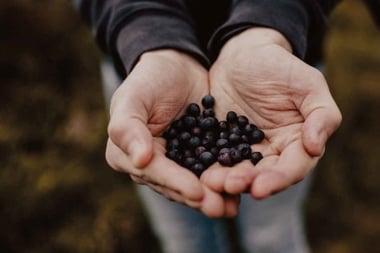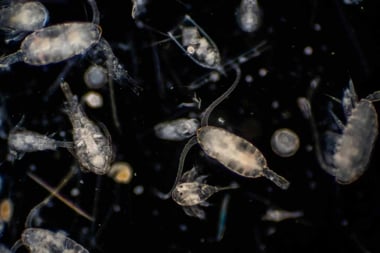
Considered fattening during the low-carb craze, the potato is now being hailed as a nutritional star. Try our easy recipes and get the scoop on potatoes.
Considered fattening during the low-carb craze, the potato is now being hailed as a nutritional star. Try our easy recipes and get the scoop on potatoes.
While many of us enjoy eating potatoes, few of us appreciate how nutrient dense the tasty tuber is. When researchers recently tested 100 common foods for their antioxidant status, potatoes ranked an impressive fifth place overall. Surprised?
Consider this: a recent report released by the School of Public Health at the University of Washington noted that “potatoes had a more favourable overall nutrient-to-price ratio than did many vegetables and fruit.”
And more good news: they really aren’t fattening at all. A medium-sized potato has only 136 calories—as long as it isn’t laden with butter or gravy!
What’s in the humble root that has scientists so impressed? Plenty. Potatoes contain fair amounts of vitamin B6, thiamine, riboflavin, folate, magnesium, phosphorus, iron, and zinc. But they pack a real nutritional punch when it comes to supplying potassium, antioxidants, vitamin C, and resistant starch (a type of dietary fibre). Let’s examine the implications this has for your health.
Potassium
In 2004 the American National Academy of Sciences increased the recommended intake for potassium due to scientific evidence that the mineral helps control hypertension and prevent stroke.
More recently, the results of a meta-analysis of several studies, printed in the Journal of the American College of Cardiology, supported recommendations for higher consumption of potassium-rich foods to prevent not only hypertension and stroke, but also all forms of coronary and cardiovascular disease.
That’s great news for spud lovers—the potato ranks number one for potassium content among the 20 top-selling fruits and vegetables. One serving of potatoes with skin contains 720 to 800 mg of potassium; broccoli, the runner-up in the category, contains only 540 mg per serving.
Antioxidant power
Think of antioxidants as bodyguards for your cells; they protect them from cell-damaging forces known as free radicals. An easy and delicious way to boost your intake of these vital nutrients is to eat more potatoes. The antioxidant “army” found in potatoes includes chlorogenic acid, caffeic acid, gallic acid, catechin, malvidin, and ferulic acid.
In addition, purple potatoes contain anthocyanins, a type of antioxidant most commonly associated with blueberries. Similarly, yellow potatoes contain beta carotene, the antioxidant that gives certain foods their red-yellow pigment.
Interestingly, the potato with the highest antioxidant value is the rather unglamorous russet, otherwise known as a baking potato. Two new studies demonstrate the power behind the potato’s antioxidants: scientists found that extracts from potatoes killed both breast and prostate cancer cells.
Vitamin C
This might surprise you: one medium-sized potato contains nearly half the daily recommended intake for vitamin C (45 percent)—as much as a medium-sized tomato. Numerous studies indicate vitamin C can help prevent both cardiovascular disease and cancer. The hard-working vitamin also aids in collagen production, a process that helps maintain healthy joints and gums and keeps your skin looking youthful.
Resistant starch
Resistant starch may be the most beneficial compound you’ve never heard of. It’s a type of starch found in certain foods, such as potatoes, that is resistant to enzymatic digestion in the small intestine. Instead, it ferments in the large intestine where it stimulates the growth of beneficial bacteria and enhances the production of important short-chain fatty acids (SCFA).
One of these SCFAs is butyrate, which has been shown to protect colon cells from cancer. Current research suggests resistant starch delivers some impressive health benefits, including decreasing postprandial glycemic response, lowering plasma cholesterol and triglyceride concentrations, increasing satiety, and reducing fat storage after meals. Curiously, cooking then cooling potatoes significantly increases their resistant starch content.
A gift from South America
The potato originated in the Andes Mountains of South America and was introduced to Europe by the Spanish conquistadores in the mid-16th century. They were sent around Europe as exotic gifts from the Spanish court.
Russets (baking potatoes)
Characterized by a thick brown skin that covers their white flesh, these oval-shaped potatoes are soft and floury when cooked. Russets have the highest antioxidant value of any potato. They are best used for baking, mashing, or as fries.
Reds
Round shaped and rosy in colour, reds have white flesh that is low in starch and high in moisture. They are waxy when cooked and hold their shape well, making them an excellent choice for stews, soups, and salads.
Yellows
Usually round or just slightly oval, yellow spuds have golden flesh that is almost buttery when cooked. They have a medium starch level and are suitable for boiling, mashing, baking, and roasting. The most popular yellow potato is the Yukon Gold.
Long or round whites
This potato either has a distinctive long oval shape or is ball-like and has white or pale tan skin. Like reds they are fairly low in starch and hold their shape well after cooking, making them great for frying, mashing, boiling, or baking.
Purple potatoes
Easily distinguished by their purple skin and flesh, purple potatoes are lower in starch than most varieties, but are abundant in anthocyanins, antioxidants that give the potatoes their distinctive hue. While delicious boiled, roasted, or fried, they really shine in salads.
A staple food
The United Nations declared 2008 the Year of the Potato to “raise awareness of the potato’s fundamental importance as a staple food of humanity.”
The Irish famine
During the potato famine from 1845 to 1846 in Ireland, caused by a disease called late blight, an estimated 1 million people starved to death and more than a million were forced to migrate abroad.
Did you know?
Boiling potatoes causes significant loss of vitamin C, and though baking causes a slightly higher loss of vitamin C, losses of other vitamins and minerals during baking are lower.
Potatoes in space
The potato was the first food to be grown in outer space. To determine if plants respond to long-duration space missions, in 1995 astronauts took potato plants on the space shuttle Columbia and grew them successfully in the zero-gravity environment.
Recipes




